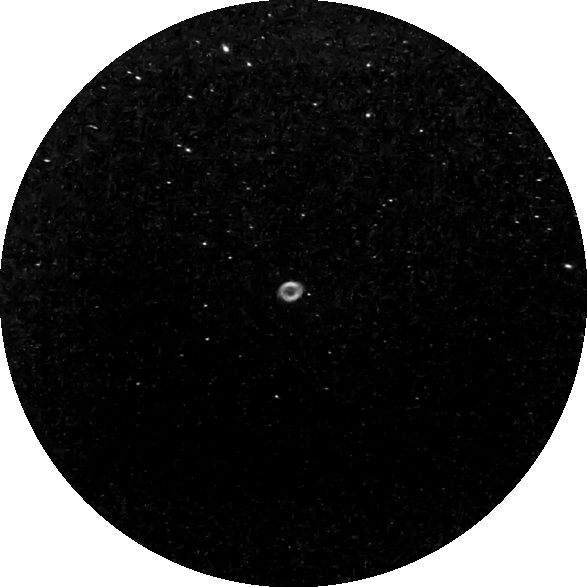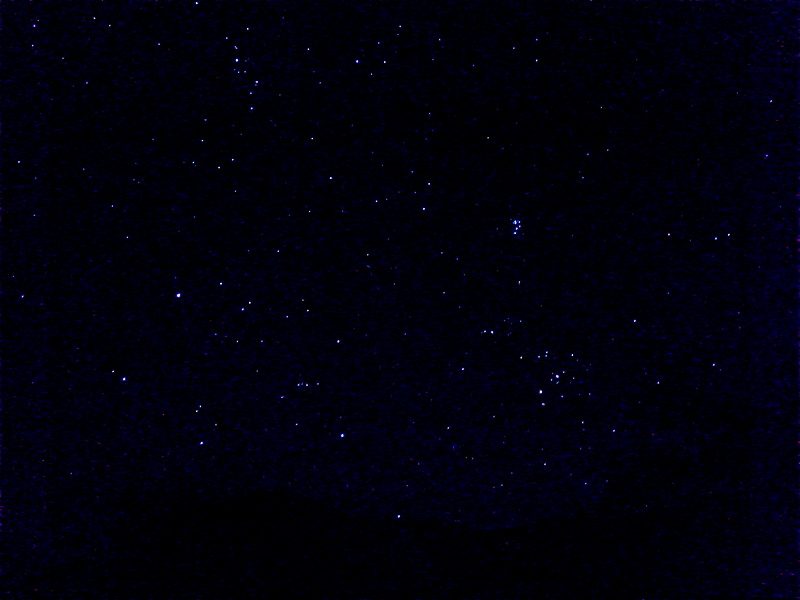NGC206 Stars in Andromeda Galaxy;
iPhone DSOs & Sky
Posted: 26 October 2016
Clouds arrived on Saturday, 22 October 2016, ending a nice run of observing sessions. Cloudy skies continued until Tuesday, 25 October. Monday, 24 October, was overcast so missed out on a transit of the Sun by the Hubble Space Telescope.
|
Open: Tuesday, 25 October 2016, 1803 MST Temperature: 87°F |
Session: 1031 Conditions: Clear |
Equipment Used:
12" f/8 LX600 w/StarLock
Wireless AutoStar II handset
2" 24mm UWA eyepiece
2" 30mm eyepiece
2" 50mm eyepiece
2" 2X PowerMate
1.25" 26mm eyepiece
Camera:
D7200 DSLR
iPhone 6s Plus
1809 MST: LX600 ON, StarLock OFF, High Precision OFF.
I did some preliminary fit tests of a new smartphone afocal adapter I am trying out. I will post a review once I finish doing further tests.
1820 MST: viewed Venus, 102X. Very bright. Then viewed Saturn, 102X. Its moons Titan and Rhea were visible. Next, viewed Mars, 102X. Too distant and too small for a good view.
1827 MST: began preparing for DSLR imaging of NGC206, a star cloud in the Andromeda Galaxy (M31). I had observed several faint stars in NGC206 on 20 October 2016 and wanted to capture an image showing those same stars.
While waiting for Astronomical Twilight to end (1902 MST) I began looking for the newly discovered nova in Sagittarius using 12x70 binoculars. 1835 MST: saw the nova in the binoculars. It was faint (not visible to the naked eye) but fairly easily seen in the binoculars.
1842 MST: slewed the 12" telescope to NGC206 in M31. Finally at 1855 MST I was able to view the star cloud using 203X. SYNCed the AutoStar on NGC206. Turned High Precision ON. Mounted the DSLR at prime focus + 2X PowerMate. Focused on the High Precision alignment star using the focusing mask. Then did some framing tests using 1 minute, ISO 12800, exposures. Once I was satisfied with the framing, I did several exposures of various lengths and ISO settings. This is a crop of a 3 minute, ISO 6400, StarLock autoguided exposure:

Mouseover or tap on image for Magnitude labels
Unfortunately, the focus shifted slightly so the stars are a little out-of-focus. But the stars labeled in the rollover image are the ones I visually observed on 20 October (per the S&T article) using the 12" telescope.
1939 MST: ended NGC206 imaging. StarLock and High Precision OFF. Viewed M31, M32, and M110 galaxies using the 2" 30mm eyepiece (81X). Good views. Then viewed the Double Cluster, 81X. Pretty. Began doing tests of the new smartphone adapter. Also viewed the Double Cluster using the 2" 50mm eyepiece (49X) and 1.25" 26mm eyepiece (94X).
While testing the smartphone adapter with my iPhone 6s Plus I took these afocal 94X images using NightCap Pro:
Double Cluster, Long Exposure, Light Boost, ISO 2500, 30 seconds

Dumbbell Nebula (M27), Long Exposure, Light Boost, ISO 8000, 2 minutes

Ring Nebula (M57), Long Exposure, Light Boost, ISO 8000, 1 minute

I used the Apple Earbuds/Mic volume control as a remote shutter release for some images. I also use the Apple Watch as a remote shutter release for the image of the Dumbbell Nebula. This is how the live view of M27 looked on the Watch with M27 faintly visible at the center:

I then viewed M45 (Pleiades), 49X and 102X.
2112 MST: LX600 OFF. Began setting up for sky imaging using the iPhone 6s Plus and NightCap Pro. Mounted the phone on a camera tripod using the new smartphone adapter. This is a Long Exposure, Light Boost, ISO 8000, 30 seconds, image showing the sky to the east of Cassiopeia Observatory.

Mouseover or tap on image for labels
2147 MST: completed sky imaging.
|
Close: Tuesday, 25 October 2016, 2200 MST Temperature: 68°F |
Session Length: 3h 57m Conditions: Clear |
Comments are welcome using Email. Twitter users can use the button below to tweet this report to your followers. Thanks.
Cassiopeia Observatory Home Page
Copyright ©2016 Michael L. Weasner / mweasner@me.com
URL = http://www.weasner.com/co/Reports/2016/10/26/index.html
